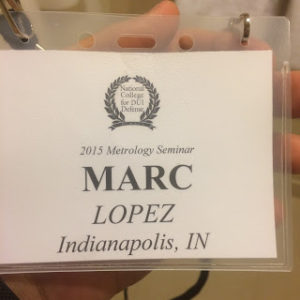 The National College of DUI Defense just finished Day 1 of its Science as Your Best Defense CLE in Atlanta Georgia. It has been an amazing and eye opening experience. The purpose of the course is to better learn the science and methods behind forensic testing as it relates to DUI cases. And to understand how the measurements used to determine blood alcohol content are determined. The purpose of all this is to help clients accused of Operating a Vehicle While Intoxicated (OVWI/ DUI). A BAC ticket, despite what the government would like for you to believe is not the end of the story.
The National College of DUI Defense just finished Day 1 of its Science as Your Best Defense CLE in Atlanta Georgia. It has been an amazing and eye opening experience. The purpose of the course is to better learn the science and methods behind forensic testing as it relates to DUI cases. And to understand how the measurements used to determine blood alcohol content are determined. The purpose of all this is to help clients accused of Operating a Vehicle While Intoxicated (OVWI/ DUI). A BAC ticket, despite what the government would like for you to believe is not the end of the story.
Certified Quality Auditor Janine Arvizu and Attorney Peter Johnson started the seminar off addressing Traceability. It is an accepted scientific principle that there is no reliable measurement unless the tools and the measurement itself are traceable. That is the measurement result can be related to a reference though a documented unbroken chain. So basically, if something says it is a pound or milligram, it really is a pound or milligram. This is more complicated than I originally realized. And important. So important that there is actually a Federal Agency that takes addresses and ensures scientific standards, theNational Institute of Standards and Technology.
Uncertainty was the next topic and the need, especially with forensic blood and breath testing, to estimate uncertainty. These steps include specifying the measurement process, identifying uncertainty sources and quantifying uncertainty sources. This bonefish diagram about the things that lead to bad cup of coffee is actually a fairly good depiction of the uncertainty associated with a blood or breath test. Every attorney that represents clients accused of intoxicated driving needs to understand how the equipment, procedures, material and people, among others, results in uncertainty with the blood or breath sample.



